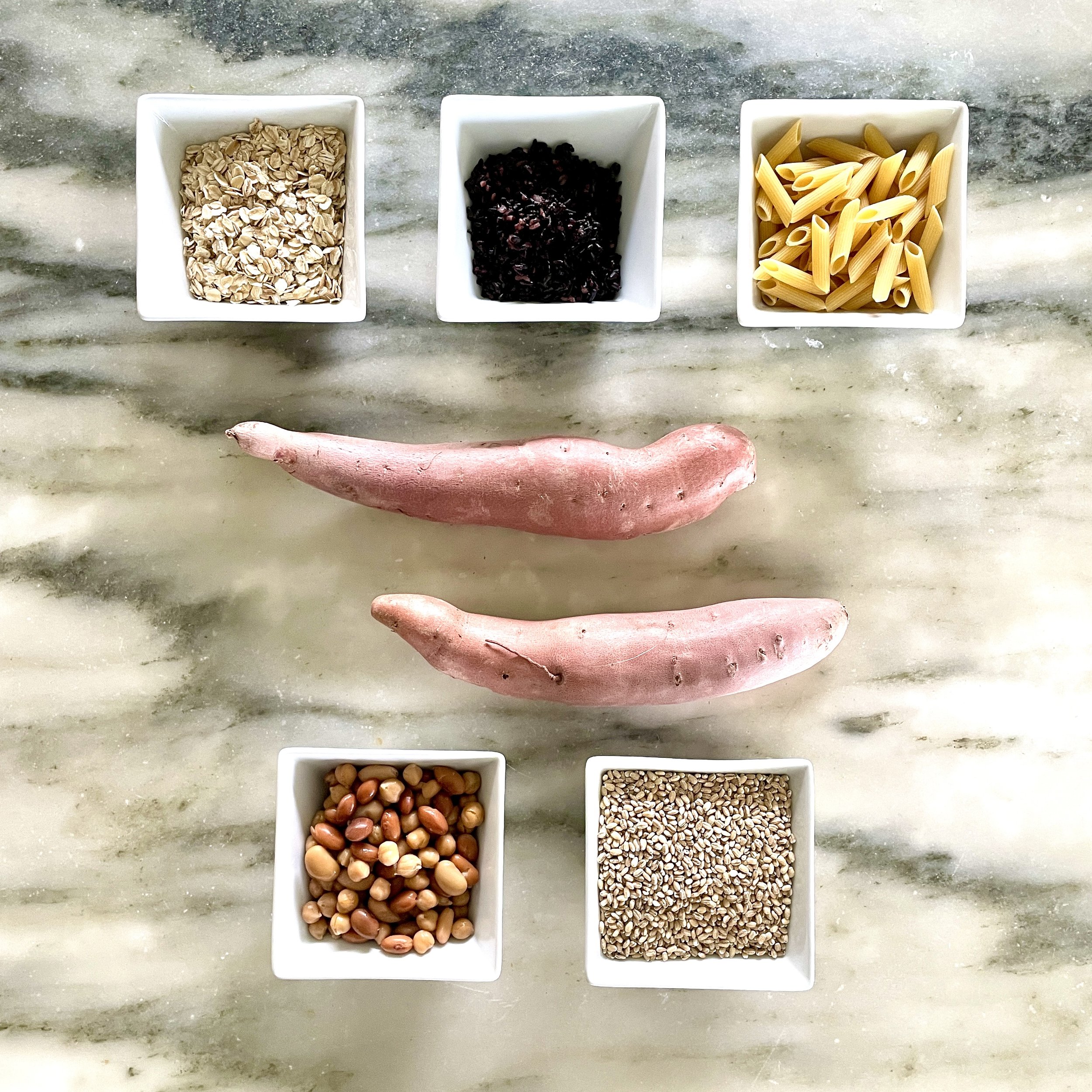Resistant Starch
What exactly is resistant starch?
Resistant starch is a type of starch in which the molecule is tightly packed, preventing digestion by enzymes in the small intestine. Humans don't possess the enzymes to digest resistant starch, so it travels undigested down to the large intestine, where it is eaten by our good gut bugs and fermented into short chain fatty acids (which have abundant health benefits). Think of resistant starch as a protective travel pod around a starch molecule, allowing it to glide safely through our stomach and small intestine until it gets to its final destination and it can be opened in a way that is beneficial to our health and our gut microbiome.
Health Benefits
Resistant starch is excellent for our health. It is the preferred food for our gut microbes, supporting a healthy population of good gut bugs and a thriving microbiome. It has also been shown to be useful in the treatment of diabetes, as it helps with the regulation of blood sugar, improves metabolism, and increases insulin sensitivity. It helps to prevent coronary heart disease and to lower cholesterol. It is also highly beneficial for improving digestive health, it can reduce constipation and bloating, and it has been shown to lower the risk for colon cancer and inflammatory bowel disease.
Weight Loss
Resistant starch has also been shown to be an effective weight loss tool. The more resistant starch a food has, the less calories our bodies will absorb. Simple carbohydrates generally have about 4 calories per gram. Resistant starch, as it is difficult to absorb, tends to only have about 2 to 2.5 calories per gram, so you can eat the same amount of food for less calories. In addition, resistant starch takes more energy for our body to absorb, and it may increase the number of calories we burn simply digesting our food. Finally, resistant starch keeps us full longer, so we are likely to consume less calories from other foods throughout the day.
How to Obtain Resistant Starch
Some foods are naturally high in resistant starch, such as:
Beans, peas, and lentils (white beans and lentils are highest in resistant starch)
Plantains and green bananas
Whole grains (especially oats and barley)
The grains must remain whole to retain the resistant starch. Milling or grinding whole grains can release the starch, breaking apart the protective pod and making it easier for the calories to be absorbed in the small intestine. This can lead to rapid glucose elevations and weight gain. So, it is critical that we eat our grains as close to their original form as possible.
Resistant starch can also be found in some highly processed foods that are chemically modified in a lab to create food additives. You can also cook with raw potato starch, green banana flour, or high amylose corn starch. As I'm all about eating real whole plant foods, though, these are not forms of resistant starch that I will personally be seeking to add to my diet.
There are a few whole plant foods, however, that we can manipulate to increase the resistant starch levels. For example, the glucose units in hot, just-cooked rice have a loose structure, making them easy to absorb. When cooled, the molecules rearrange themselves into very tight bonds that are resistant to digestion. This is also true of potatoes, sweet potatoes, and pasta. These foods gain resistant starch as they cool, so cooking them in advance and then refrigerating them overnight will actually alter how the food is absorbed. Reheating the food, does not destroy the resistant starch. This is yet another reason why meal prepping is so helpful. Not only does it make it easier to compose healthy meals, but it actually increases the resistant starch in your prepped carbohydrates.
One final way you might consider increasing your resistant starch consumption is through eating overnight oats. Regular oats, which are cooked and eaten immediately, do contain resistant starch. However, the levels of resistant starch are greatly increased when the oats aren't actually cooked, but are consumed in a raw and soften form, as is done with overnight oats. You can find my post on overnight oats here: www.thewell-nourishedbrain.com/blog/overnight-oats
I encourage you to fill your diet with whole grains and legumes which are naturally full of resistant starch, and try cooking and cooling your rice, pasta, and potatoes overnight before eating them. Or, simply buy frozen precooked rice. Not only will you be saving time, but you will be increasing your levels of resistant starch. I love it when a shortcut comes with a health boost!
Happy eating!
🌱💕
For additional information on resistant starch, please see:
www.ncbi.nlm.nih.gov/pmc/articles/PMC5646248/
www.pubmed.ncbi.nlm.nih.gov/15287677/
www.nutritionandmetabolism.biomedcentral.com/articles/10.1186/1743-7075-1-8
www.pubmed.ncbi.nlm.nih.gov/25770258/
www.hopkinsdiabetesinfo.org/what-is-resistant-starch/
www.thehealthygrain.com/six-facts-about-resistant-starch/
www.frontiersin.org/articles/10.3389/fbioe.2021.575724/full
www.sciencedirect.com/topics/agricultural-and-biological-sciences/resistant-starch


